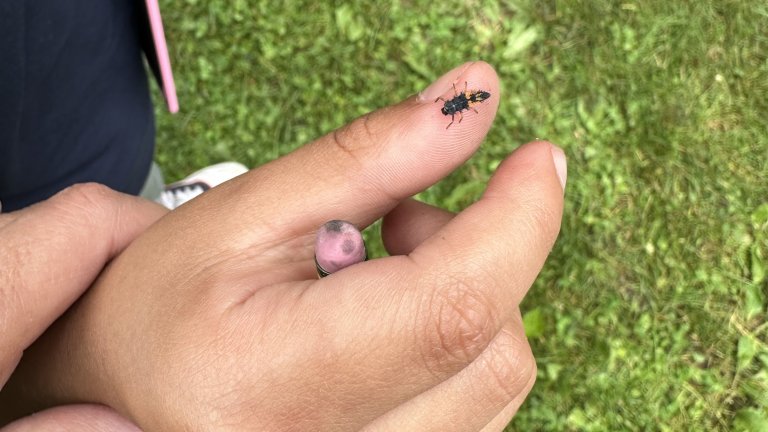
Grade Level: K-6
Expectations
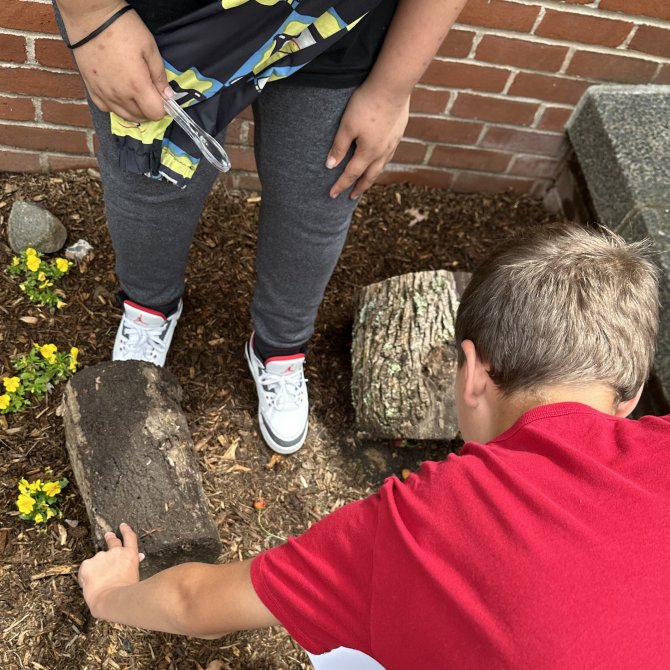
Goal:
Students will be able to hypothesize about the quality of the soil in the school yard garden by assessing the populations of the various species of insects, worms, and other small animals, and propose methods to improve soil quality.
Objectives:
- Students will be able to identify the differences between various species of small animals (arachnids, insects, worms and slugs, and animals with lots of legs).
- Students will be able to identify the living conditions in which each creature thrives (for example, worms thrive in dark, moist environments, whereas ladybugs thrive on garden plants where they can hunt aphids.)
- Students in grades K-2 will be able to count the number of animals of each type.
- Students in grades K-2 will be able to identify which population of animals is the largest and which is the smallest.
- Students in grades 3-6 will be able to graph the population of each population of animals.
- Students in grades 3-6 will be able to make inferences about the garden soil based on the animals observed.
- Students in grades 3-6 will be able to work in groups to come up with at least one idea on how to improve the quality of the soil in the school yard garden habitat.
- Students in grades 3-6 will be able to form hypotheses about the populations of the animals at different times of the year (this lesson can be repeated during different seasons to test these hypotheses).
- Students in grades 3-6 will be able to discuss ways scientists might collect and use wildlife data.
Next Generation Science Standards:
- K-LS1-1. Use observations to describe patterns of what plants and animals (including humans) need to survive.
- K-ESS2-2. Construct an argument supported by evidence for how plants and animals (including humans) can change the environment to meet their needs.
- K-ESS3-3. Communicate solutions that will reduce the impact of humans on the land, water, air, and/or other living things in the local environment.
- 1-LS1-1. Use materials to design a solution to a human problem by mimicking how plants and/or animals use their external parts to help them survive, grow, and meet their needs.
- 2-LS4-1. Make observations of plants and animals to compare the diversity of life in different habitats.
- 3-LS4-3. Construct an argument with evidence that in a particular habitat some organisms can survive well, some survive less well, and some cannot survive at all.
- 5-LS2-1. Develop a model to describe the movement of matter among plants, animals, decomposers, and the environment.
- 3-5-ETS1-2. Generate and compare multiple possible solutions to a problem based on how well each is likely to meet the criteria and constraints of the problem.
- MS-LS2-1. Analyze and interpret data to provide evidence for the effects of resource availability on organisms and populations of organisms in an ecosystem.
- MS-LS2-2. Construct an explanation that predicts patterns of interactions among organisms across multiple ecosystems.
- MS-LS2-3. Develop a model to describe the cycling of matter and flow of energy among living and nonliving parts of an ecosystem.
- MS-LS2-4. Construct an argument supported by empirical evidence that changes to physical or biological components of an ecosystem affect populations.
- MS-LS2-5. Evaluate competing design solutions for maintaining biodiversity and ecosystem services.
Environmental Connection
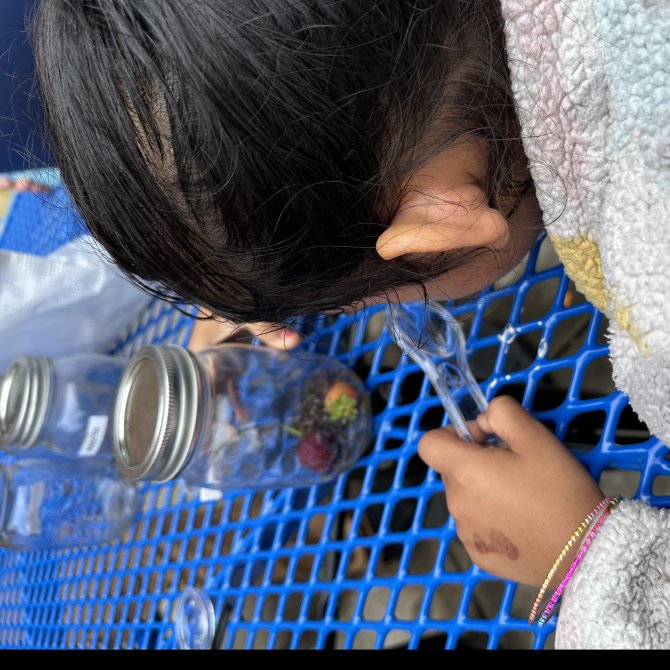
This project supports EPA priority Education: Community Projects
Increasing young people’s understanding of the benefits of and participation in environmental stewardship related to clean water, soil and land revitalization, and management of ecosystem health. In an urban setting, this project advances outdoor, place-based experiential education and community-based stewardship as primary teaching tools.
By analyzing the populations of various macro-organisms in their school yard garden habitat, students gain a greater understanding of animal populations, their roles in the garden, and the health of the school yard garden habitat. This knowledge affords students a greater understanding of the need for clean soil and clean water, so that their garden habitat can thrive.
Experience
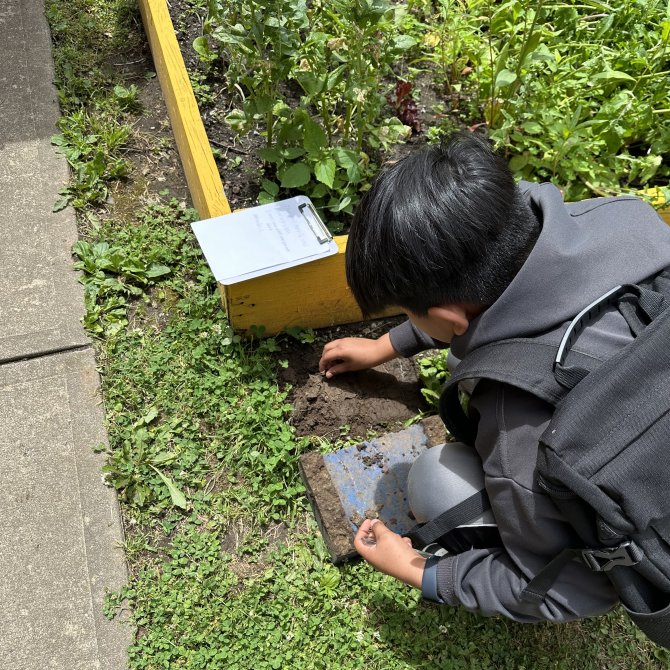
Introduction:
Begin the lesson by discussing the different types of macro-organism categories we’ll consider (Insects, Worms and Slugs, Arachnids, and Animals with Lots of Legs,) the environmental conditions in which each type thrives, and the relationship between the types and numbers of creatures and the quality of the soil. For students in grades 1-2, the teacher will read Bugs, Bugs, Bugs, by Bob Barner. Older students will be split into groups and come up with a hypothesis about the soil quality in the school yard garden, and how it can be improved.
Activity:
Students will then spend approximately 25 minutes gently collecting creatures in the school yard garden and sorting them into four jars marked with each category. (A modification is to have students walk around the garden with clipboards, paper, and pencils, and tally how many animals of each category they observe.)
Once students have collected the various macro-organisms, they will assess the numbers of each population. Younger students (grades k-2) will use the How Many? handout to record the quantity of each type of animal. Older students (grades 3-6) will create a bar graph (Organism Populations in the School Yard Garden Habitat handout) of each animal population.
Discussion:
Students will discuss their findings in small groups, including whether or not their population findings support their hypotheses. If their findings show that the soil needs improvement, they will discuss ideas to improve the soil quality in the school yard garden. The teacher will discuss with the students how scientists might collect data and interpret what it means, and learn about the significance of biodiversity, how populations fluctuate and change, and what that could mean. The teacher will also discuss how doing this at different times of the year might give us very different results, so we, as scientists, have to consider the seasons when making our analysis.
Extension:
Students can implement some of the improvements that they came up with to improve the soil quality in the school yard garden.
Repeat this activity at a different time of year. Are your findings different?
Exhibition
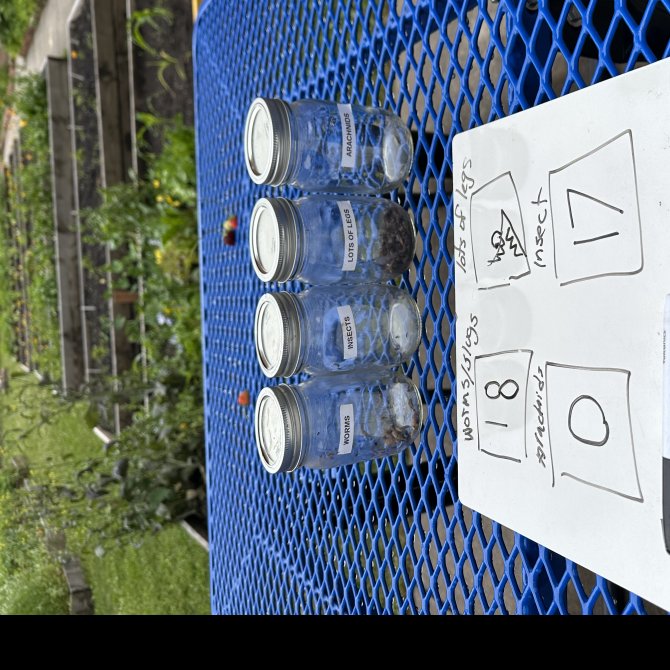
Student learning is assessed in this lesson through peer to peer discussion, teacher to student discussion, data collection and graphing, as well as through the hands-on application of improving the school yard garden habitat.
